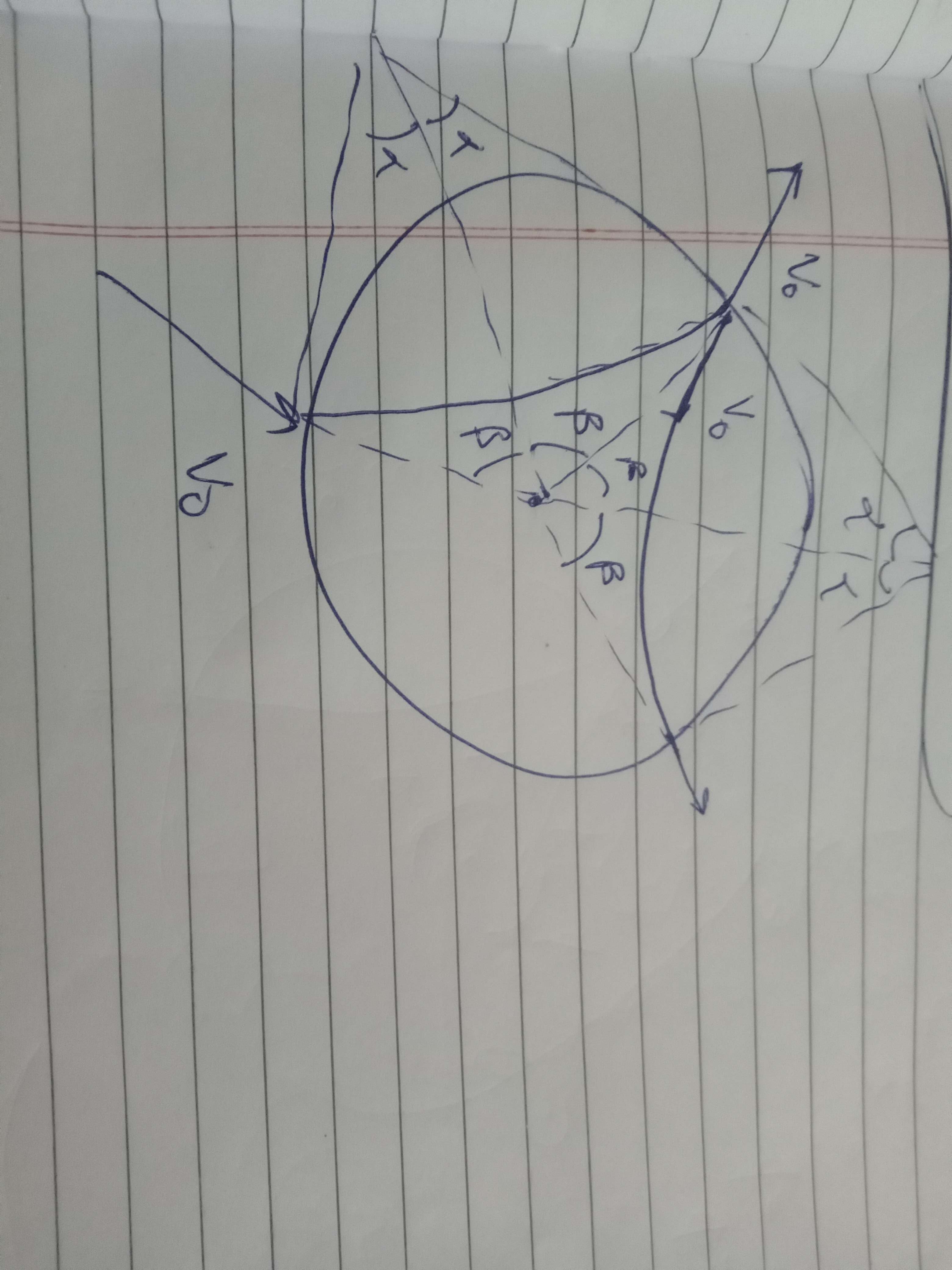11 Replies
@Gyro Gearloose
Note for OP
+solved @user1 @user2... to close the thread when your doubt is solved. Mention the users who helped you solve the doubt. This will be added to their stats.I was thinking of trajectory like this

if n is number of collisions (n is integer )we can say (n+1)2beta = 2pi in order to get out of cylinder
beta = pi/2 - alpha
(n+1)(pi/2 -alpha) = pi
from here we get relation between alpha and pi
2theta = pi (n-1)/n+1 is what i was getting
time = 2ntheta m/qb
for tmin i differentiate and get n^2-3n+1 = 0 but this doesnt have integer roots
where am i going wrong
( i have solved the ques already with n = no of arcs = no of coliision + 1 and 2nbeta= 2pi but idk why my other approach isnt working)
ur function is correct for time in terms of n but for minimum u cannot directly use differentiation as n is restricted to only integer and >0 values so ulll have to analyse function manually and ull notice thats its a strictly increasing function for T>0 and u cannot choose 1 cuz T is 0 so the correct answer for n has to be 2 which implies 2 collisions take place which is correct.


@hardcoreisdead
hmm i get it
subsequently sab aa jayenge
yes
can u look at electrostats one
ad others too agar time ho
thanxx
+solved @integralofe^2v
ping me till then i brb and look at it
Post locked and archived successfully!
Archived by
<@741159941934415883> (741159941934415883)
Time
<t:1753724293:R>
Solved by
<@813025027611688970> (813025027611688970)
